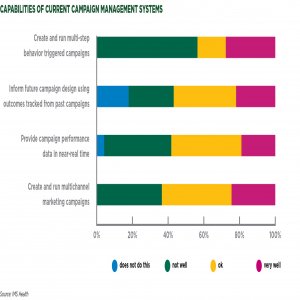Interdisciplinary Industry-Focused Legal Advice

STORY INLINE POST
Q: What is the importance of the Life Sciences division for Baker & McKenzie?
A: Since the firm was founded in 1949 in Chicago, we have worked closely with the pharmaceutical industry. As the first law firm to envision the possibility to create an international legal practice capable of helping companies operate globally, we have been able to assist the pharmaceutical industry in their internationalization of operations, making us one of the first firms to develop industry-specific advice. This remains true in Mexico, where the pharmaceutical industry is at the core of our life sciences group and where we have created the most advanced and largest regulatory practice in the country. Our strategic investment in interdisciplinary teams who handle highly specialized services, covering the whole life cycle of a drug or medical device, is proof of our constant commitment to the industry. As a full service law firm, the challenge was to integrate more effectively our wide span of proven capabilities for this sector. With the creation of our Pharma & Life Sciences Industry Group we are achieving this.
Q: In what way do you assist companies who wish to establish a presence in Mexico?
A: A natural client base of the firm comes from foreign companies, many transnational ones, who want to enter the Mexican market or establish a presence in Mexico. Whether this is done directly with a subsidiary or through a third party, we help them design and implement the adequate legal structure for their business model. On the regulatory side, where we hold an undisputed leadership position, we are particularly sought when companies want to open dialogues with regulators or to prepare written submissions, where science and legal arguments need to be articulated.
Q: What is the most frequently sought advice that clients come to Baker & McKenzie for?
A: We are regularly approached when different areas of law need to be integrated into a coherent business strategy. For instance, we have been integrating tax advice and regulatory work, to defend clients against certain measures taken by the tax authorities, such as determinations of Permanent Establishment, or analyzing Base Erosion and Profit Shifting (BEPS) implications regarding transfer of intangible assets.
This also includes integrating regulatory advice on Mergers & Acquisition (M&A) transactions, which had traditionally only added labor and tax issues in the corporate advice. We have also seen the convergence between Health & Information Technologies in the industry, where new issues relating to privacy law, mobile health, e-commerce and emerging regulatory questions require us to integrate different areas of law. More traditional interactions include intellectual property and regulatory issues, such as complying with the linkage system, which creates a wall to obtain regulatory approval if the product is still protected by certain pharmaceutical patents. Another issue is the coordination of the separate system for pharmaceutical trademarks, which deals with having a database of drug names managed by the regulatory authority, while simultaneously having the registration of trademarks being managed by the patent and trademark office, both based on different criteria, timings and procedures.
Q: How have changes in the distribution segment for pharmaceuticals in terms of M&As impacted the industry?
A: The distribution segment has been experiencing profound changes for some time, transforming the weight and role of traditional distributors as well as the core of the required services. Whereas the core services have been realigning towards more logistic services and operators, the wider changes include the growing presence of major pharmacy chains, the entry of major retailers and supermarkets into the in-store pharmacy model, in some cases with own branded generics, or the emerging model of convenience stores either selling OTC products or incorporating a mixed model of in-store pharmacy. Another game-changer has been the emergence of physicians at the point of sale.
Q: Regarding pricing-setting, what is the difference between the private and the public sector?
A: Primarily, it depends on whether or not the product is patented, then whether or not it goes to the public or private sector. For patented products in the private market there is a complex mechanism. We provide assistance to companies during this stage. In contrast, there is no regulation for patented generics. For the public sector, pricing of patented products is determined through a negotiation between companies and a group of government agencies.























